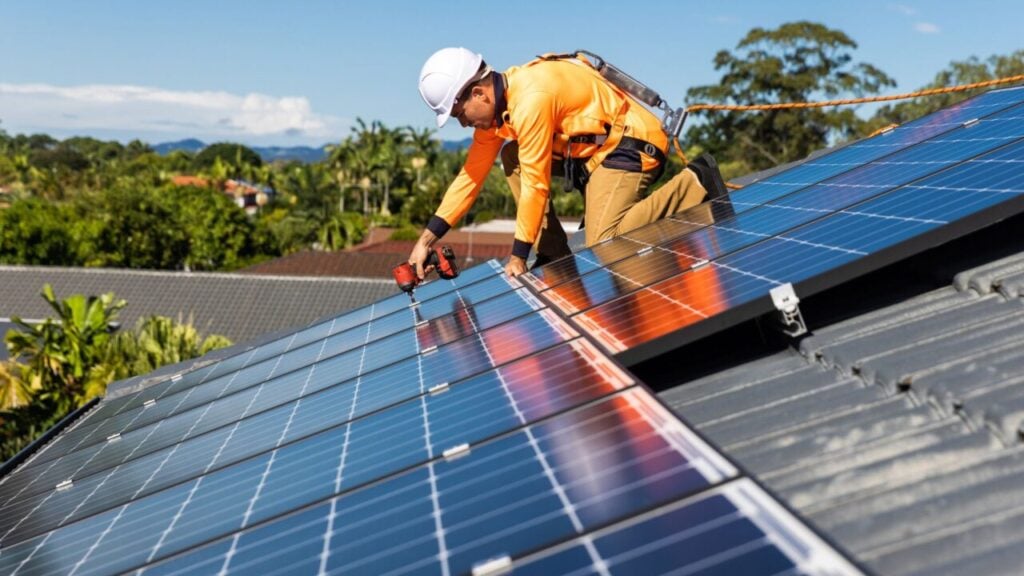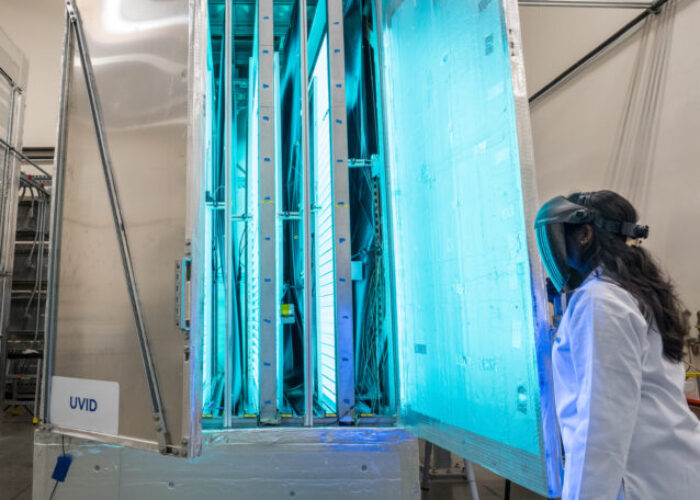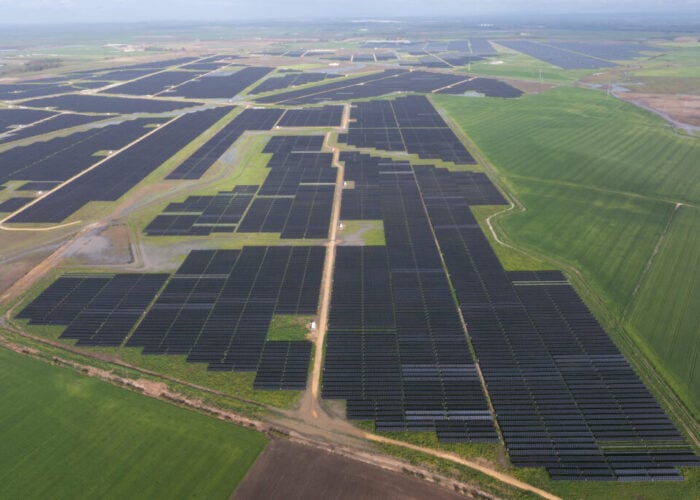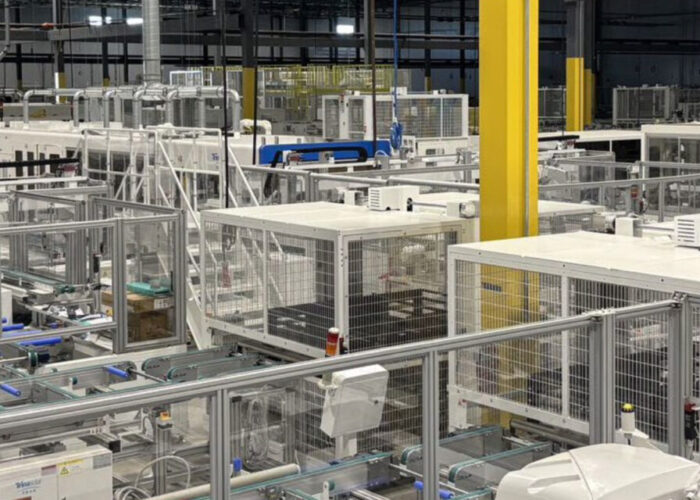
Implementing greater policy clarity pertaining to the implementation of the Energy Performance of Buildings Directive (EPBD) and effectively integrating private capital into project financing will be essential components of realising the EU’s distributed rooftop solar targets.
These were key conclusions drawn by speakers on a panel discussion, hosted this morning by trade body SolarPower Europe, who considered how best to implement the EU’s EPBD. The programme, adopted last year and coming into force next year, sets minimal requirements for new rooftop PV installations on new buildings, or on existing buildings that meet certain requirements, in order to expand Europe’s rooftop solar sector.
Try Premium for just $1
- Full premium access for the first month at only $1
- Converts to an annual rate after 30 days unless cancelled
- Cancel anytime during the trial period
Premium Benefits
- Expert industry analysis and interviews
- Digital access to PV Tech Power journal
- Exclusive event discounts
Or get the full Premium subscription right away
Or continue reading this article for free
The initiative seeks to expand the residential and commercial and industrial (C&I) sectors in particular, with the standard applying to non-residential buildings until the end of the decade, and new residential buildings from 2030 onwards. SolarPower Europe’s own figures suggest that implementing the EPBD could drive the installation of 150-200GW of rooftop solar in the coming years, but greater clarity on how this programme is implemented will be essential.
Policy recommendations
“National laws must account for the grid connection … whenever grid operators say you cannot install more PV, there needs to be a robust assessment [of the situation],” said Jan Osenberg, head of system integration at SolarPower Europe, who moderated the panel discussion, discussing longstanding questions over Europe’s available grid capacity for new renewable power projects. He also noted that individual countries could streamline and simplify the procurement process to better encourage new PV installations.
“EU countries must facilitate the sales process,” said Osenberg. “We need simplified public procurement procedures, with flexible and proportionate tendering requirements, to enable public authorities to go through the process of getting a PV installation.”
A more streamlined permitting process could also take advantage of what panelists said was widespread interest in installing new PV projects, particularly among consumers and homeowners, who will likely drive the residential rooftop growth from 2030 onwards.
“It’s very evident for most people why renewables, energy efficiency and good buildings are a good thing, and something we should inspire and work towards,” said Niels Ladefoged, deputy head of unit at DG ENER and the European Commission, who went on to suggest that policymakers should look to alleviate concerns, and provide clarity and confidence, for potential residential solar prosumers in an increasingly complex world.
“There are also lots of reasons to be nervous about all the changes we see in the world,” he said. “This nervousness led many to wonder how we can manage all these transitions and challenges at the same time. We don’t need to convince people ideologically that this is the way to go, but that they’re simple; it’s simplifying things on the ground, and making sure that the economic incentives that people are confronted with are aligned with doing the right thing.”
Osenberg also said that, at least until 2030, private companies will need to be involved in the rooftop solar sector as it is their C&I buildings that will form the backbone of many of the new installations. He suggested that these companies could be better integrated into the public auction processes that are very popular in some European countries; while Germany announced that this week’s tender was slightly undersubscribed, the county’s previous two tenders each saw bids made for more than 1GW of capacity than was ultimately awarded.
“A business that will need a PV installation in the future [could] put their building on a platform, then developers get visibility on which buildings will need an installation in the future, and they can bid on the process,” said Osenberg, calling for better communication between private businesses and potential development partners.
Changing market dynamics
Better connecting private and public capital and financing mechanisms is of particular importance, considering that, according to Osenberg, the Rooftop Solar Standard, a component of the EPBD, favours some business models over others.
“The solar standard favours self-consumption models, [and this is] especially prevalent in the C&I segment,” Osenberg said. “We expect installation sizes to be a little bit smaller, leading to higher self-consumption rates. [We expect] the integration of more batteries – as many installers do as default – but also the integration of electric vehicles (EVs) and heat pumps, which are being rolled out in parallel.”
“We have to leverage the potential of third-party investor models,” he continued. “We could require citizens to make their roof available, either for their own investment, or a third party that does the installation for them, ensuring they have zero costs and net economic benefits from day one.”
Making better use of these financial mechanisms could be essential to arrest, and ultimately reverse, the recent decline in the European distributed solar space. SolarPower Europe forecasts that, between 2023 and 2025, annual residential rooftop additions will fall from 17.5GW to 10.6GW, before rebounding to what Osenberg called “single-digit growth” from 2026 onwards.
However, Leonie Beaucamp, a renewable energy expert at the German Energy Agency (DENA) said that this is not simply a matter of doing what is most profitable, as the reliance on small-scale and particularly residential solar introduces all manner of other questions and moving parts that must be accounted for when deciding whether, and how, to install a new solar system.
“It’s more complicated than just fixing a certain percentage of the rooftop space that needs to be covered by PV to fulfil the solar standard,” said Beaucamp. “Flexibility is an important aspect, as is ensuring acceptance in the population. You also have to look at the orientation of the building and of the roof, and of course, economic viability is always a really important question for the owners.
“There are a few questions linked to the question of how much rooftop space makes sense.”
Beaucamp said that, in order to satisfy the range of questions being asked by residential prosumers, some German states had started offering alternatives to the EPBD, rather than imposing a minimum solar capacity that needs to be installed per residential unit. While this could improve acceptance of rooftop PV installations on a local scale, Ladefoged argued that this kind of fragmented policy approach could actually work against the best interests of Europe as a whole.
“We’re speaking about Europe, which is a group of countries, not a country!” said Ladefoged. “This is at the core of the whole European project. Europe really needs to play to its strength and getting bigger on the single market and harmonising things to attract investment.”
Significant potential
Balancing the need to account for local differences in preference and circumstance, and meeting the broader target of installing hundreds of gigawatts of solar capacity in just a few years, is a key challenge, particularly considering the potential scale of the European rooftop solar sector and the opportunity cost of not meeting this potential.
“The EU solar standard can yield up to 100GW additional PV capacity until 2030,” said Osenburg. “It will integrate rooftop PV into the construction and permitting process, and into the electricity grid, but the success of it will depend on how member states will facilitate rooftop PV [integration].”
“8GW of that [100GW potential] will be on new C&I buildings,” he continued. “16GW will be on renovated C&I buildings and the total potential on public buildings will be 100GW.”
Beyond just the sheer scale of Europe’s rooftop PV potential, many panelists discussed the potential for co-locating other clean energy technologies – from battery energy storage systems (BESS) to heat pumps and EV chargers – with a residential solar project. Dries Acke, deputy CEO of SolarPower Europe, went a step further, suggesting that rooftop solar could be something of a gateway to a smarter and cleaner home energy management system for many European citizens.
“Rooftop PV is fast becoming the entry point for consumers and citizens for the wider energy transition, and a gateway to flexibility for buildings,” said Acke. “Rooftop solar is not just beneficial to households and business, but to the entire system, to flexibility and to all other segments of the PV industry.”






